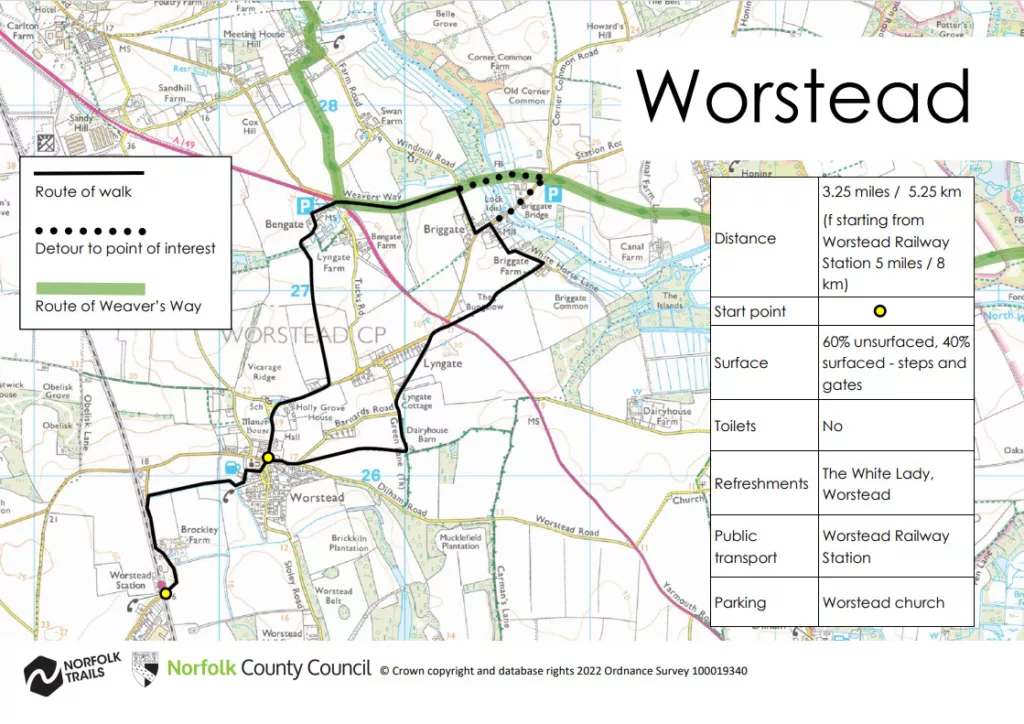The small village of Worsted alongside other neighbouring villages in Norfolk was once part of a thriving clothmaking industry that had existed since at least 1301. The trade of wool and cloth is sewn into its history, the village has given its name to the’ Worstead cloth’, or as it was once called the ‘Cloths of Worstead’. The local church St Mary’s, known as the ‘wool church’, was built largely in the late fourteenth century with money provided by several local donors and derived from the thriving wool trade. It retains much of interest internally including its box pews. It sits majestically in the main village square, where there are other notable sixteenth and seventeenth century buildings, some associated with weaving.
There are several satellite hamlets around the main settlement – Bengate, Lyngate, Meeting Hill, Withergate and Briggate. Meeting Hill is notable for its place in the history of religious non-conformity. Briggate was connected to the North Walsham and Dilham Canal, Norfolk’s only official canal which opened in 1826. Briggate lock is one of the canal’s six locks Briggate is also the site of one of the canal’s watermills (now lost). A former corn mill tower (now a residential conversion) survives at Meeting Hill.
There is further industrial archaeology interest in Worstead in its two railway lines, one, the former East Norfolk Railway of 1867 is still in use (part of the Bittern Line), the other disused line was part of the relatively short-lived Midlands and Great Northern Railway, designed to link Great Yarmouth and King’s Lynn which now forms part of the circular walk between Bengate and Briggate.

